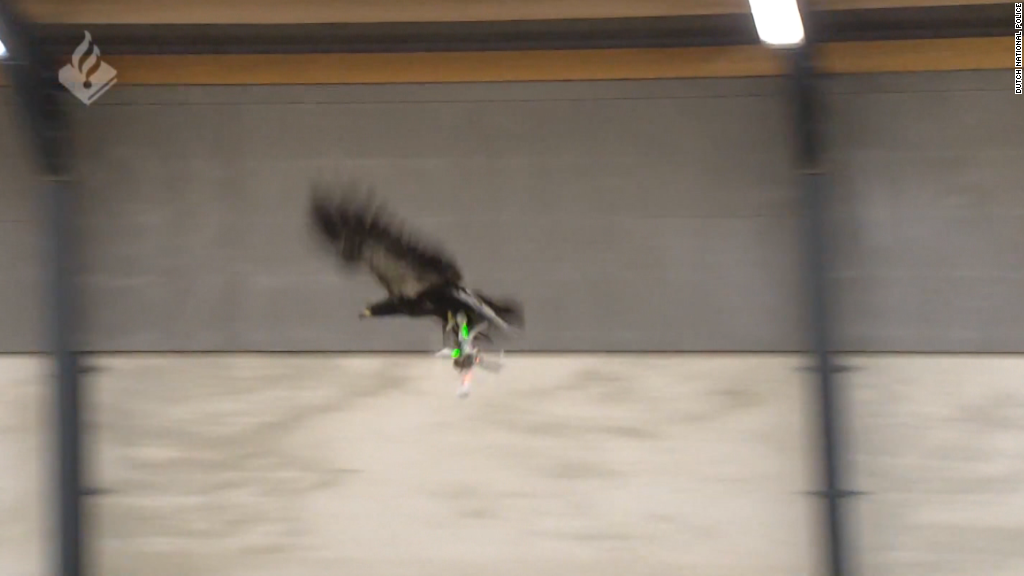
It was your usual stockpile of prison contraband: six tightly wrapped packages filled with drugs, tobacco, rolling papers, and porn.
But instead of smuggling them into prison the traditional ways (employees, visitors, baked goods), Maryland inmate Charles Brooks arranged to have a drone fly the cargo over a 12-foot barbed-wire fence and drop them in the yard.
Drone smuggling operations are an increasing nuisance to correctional facilities around the world. Most prisons are fortified with spotlights, armed guards, and cameras, but have don't have the technology to detect unmanned aerial vehicles.
"They use drones to deliver contraband to a single cell window. This is the logistics chain Amazon is dreaming about," said Joerg Lamprecht, founder of drone detection startup Dedrone.
Related: Drones armed with guns and flamethrowers face ban
Dedrone sells the DroneTracker, a 17-inch-wide device that looks like a white plastic ceiling fan and can detect a drone within 1,640 feet in any direction.
Prisons are a major market for Dedrone, but it's not the only entity battling unwanted aerial visitors. Celebrities want to keep paparazzi or industrious fans from flying cameras over their mansions. Airports and government buildings are on high alert for security breaches. Data centers are wary of being hacked by a drone flying overhead. Sports stadiums are constantly looking out for drones attempting to film games.
The DroneTracker's hardware is packed with cameras and sensors. There are microphones that can detect the sound of a drone, cameras that use image detection to identify drones day or night, and radio frequency scanners that pick up communications between drones and the ground.
When a drone cruises into DroneTracker's domain, it sends a real-time alert to someone on the ground. That's where things get a bit complicated.
Prisons can simply wait for a drone to drop a package and then confiscate it. More aggressive actions might break the law.
A jammer can bring a drone down, but they're illegal in most places. The devices create massive disturbances and can interfere with WiFi, radio signals, and even helicopters. Certain federal buildings and prisons are able to get special authority to use them.
Related: New drone rules could curtail cell tower deaths
Shooting down a drone is also usually against the law, though there is still some legal gray area. A man calling himself "the Drone Slayer" is currently fighting a lawsuit in Kentucky after he used a shotgun to bring down a drone over his home. He claims he was protecting his private property.
Then there are the more creative solutions. Researchers in Michigan have designed a drone that catches other unwanted drones with a large net. The Dutch National Policy Agency trained a bald eagle to catch drones in its claws.
At $6,900, the DroneTracker isn't for regular people worried about a camera peeping in their windows. But the problem of unwanted drones is just beginning -- more than 700,000 drones ship every month around the world.
More consumer drone detection systems will likely appear in the coming years. Possibly followed by a boom in attack eagles.

